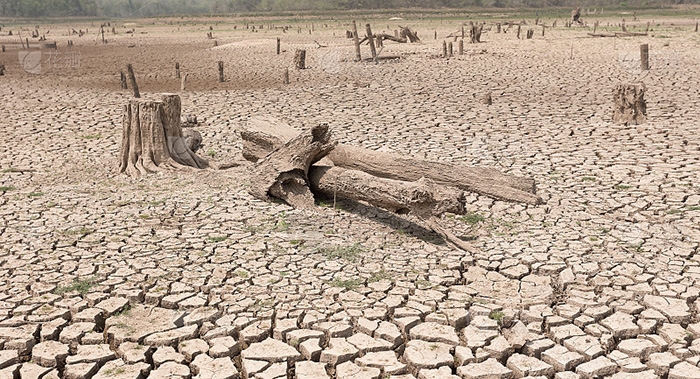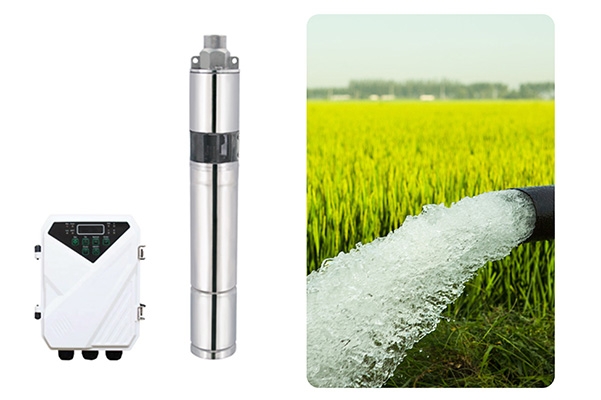Solar water pumps, which are driven by solar energy, have gained widespread attention and application globally in recent years. Their unique energy utilization and environmental benefits make them a promising solution in fields such as agricultural irrigation, domestic water supply, and disaster relief. However, the performance of solar water pumps is influenced by various factors, with climate conditions being a significant one. Home Power Inverter will delve into the efficiency and adaptability of solar water pumps under different climate environments, such as hot and dry, cold and snowy, and rainy and humid conditions, to provide valuable insights for professionals in related fields.
Performance in Hot and Dry Climate Conditions
In hot and dry climates, solar water pumps face the dual challenge of high temperatures and intense sunlight. High temperatures can cause a reduction in the efficiency of solar panels, as their power generation efficiency is closely related to temperature and generally decreases as temperatures rise. Additionally, high heat accelerates the aging of internal pump components, shortening their lifespan.
Despite these challenges, solar water pumps still have certain advantages in hot and dry climates. First, intense sunlight provides abundant energy for solar panels, allowing the pump to operate continuously during the day to meet irrigation or water supply needs. Second, given the scarcity of water sources in dry climates, the water-saving performance of solar water pumps becomes especially important. By precisely controlling irrigation volume, solar water pumps can effectively reduce water wastage and improve irrigation efficiency.
To improve solar water pump performance in hot and dry conditions, the following measures can be taken:
- Use high-temperature-resistant solar panels and pump components to enhance their heat resistance.
- Implement intelligent control systems to adjust the pump's operating state based on actual needs, preventing excessive use and component damage.
- Strengthen maintenance and regularly inspect the wear and tear of pump components, replacing aging parts on time.

Performance in Cold and Snowy Climate Conditions
In cold and snowy climates, solar water pumps face challenges such as low temperatures, snow accumulation, and freezing. Low temperatures can cause a sharp decline in the efficiency of solar panels, and they may even fail to function properly. Snow can cover the panels, blocking sunlight and further reducing power generation. Additionally, freezing can damage pump pipes and water tanks, disrupting normal pump operations.
Nevertheless, solar water pumps still offer certain applications in cold and snowy climates. For example, during winter agricultural irrigation, although irrigation needs may decrease, solar water pumps can still be used to melt snow or ice layers, providing necessary moisture for crops. Moreover, in remote areas or households lacking stable power supplies, solar water pumps can serve as emergency water supply equipment.
To enhance solar water pump performance in cold and snowy climates, the following measures can be adopted:
- Use low-temperature-resistant solar panels and pump components to improve their cold resistance.
- Incorporate heating devices or insulation materials to protect solar panels and pump pipes from freezing damage.
- Regularly clear snow to ensure solar panels can receive adequate sunlight.
Performance in Rainy and Humid Climate Conditions
In rainy and humid climates, solar water pumps face challenges such as rainwater erosion, excessive humidity, and lightning strikes. Rainwater erosion can damage or short-circuit solar PV panels and pump components, affecting the normal operation of the pump. High humidity accelerates the corrosion and aging of internal pump components. Furthermore, lightning may cause severe electric shock damage to the solar water pump system.
Despite these challenges, solar water pumps still offer certain advantages in rainy and humid climates. For example, during the rainy season in agricultural irrigation, solar water pumps can utilize abundant rainwater resources for irrigation, improving efficiency. In domestic water supply, solar water pumps can also provide reliable water for households lacking a stable water source.
To improve solar water pump performance in rainy and humid climates, the following measures can be taken:
- Use waterproof solar panels and pump components to enhance resistance to rainwater erosion.
- Strengthen lightning protection measures by installing lightning rods or surge protectors to ensure the safe operation of the system.
- Conduct regular maintenance to inspect the corrosion of pump components and replace damaged parts promptly.
Comprehensive Performance Evaluation and Adaptability Analysis
In summary, the performance of solar water pumps under different climate conditions is influenced by a variety of factors. In hot and dry climates, solar water pumps face challenges from high temperatures and intense sunlight. However, by using high-temperature-resistant components, intelligent control systems, and strengthening maintenance, their heat resistance and water-saving performance can be improved. In cold and snowy climates, solar water pumps face challenges such as low temperatures, snow accumulation, and freezing.
However, by using low-temperature-resistant components, incorporating heating and insulation, and clearing snow, their cold resistance and emergency water supply capabilities can be enhanced. In rainy and humid climates, solar water pumps face challenges such as rainwater erosion, excessive humidity, and lightning. However, by using waterproof components, strengthening lightning protection, and maintaining regular inspections, their resistance to rainwater erosion and safe operation can be improved.
From an adaptability perspective, solar water pumps hold the potential for use in various climates. While they face different challenges, corresponding improvements and optimizations can make them more suitable for each climate. For example, in hot and dry regions, the focus should be on improving the heat resistance and water-saving performance of solar water pumps. In cold and snowy regions, improving low-temperature resistance and emergency water supply capabilities is key. In rainy and humid areas, enhancing waterproof performance and safe operation should be prioritized.

Conclusion and Future Outlook
Solar water pumps, as a solar-powered water pumping system, offer valuable applications in different climate conditions. However, their performance is influenced by various factors and requires appropriate improvements and optimizations. In the future, with the continuous development and innovation of solar technology, the performance of solar water pumps will improve further, and their adaptability will increase.
For example, more heat-resistant, cold-resistant, and waterproof solar panels and pump components can be developed. Smarter control systems and monitoring technologies can be introduced to enable remote monitoring and intelligent scheduling of solar water pumps. Additionally, further integration and complementary use with other renewable energy systems can be strengthened, building a more efficient and stable energy supply system.
In conclusion, the performance and adaptability of solar water pumps in different climate conditions is a complex and important issue. Home Power Inverter believes that by conducting in-depth research and analyzing the performance characteristics and challenges of solar water pumps in various climates, and by adopting corresponding measures for improvement and optimization, these systems can better meet the demands of diverse climate conditions, providing more reliable, efficient, and environmentally friendly water supply solutions for agricultural irrigation, domestic water supply, disaster relief, and other fields.
